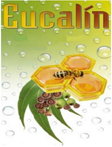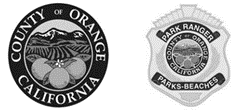In a precedential decision, the Trademark Trial & Appeal Board (Board) dismissed an opposition, finding that the trademark applicant’s long period of nonuse due to government sanctions was excusable nonuse and not abandonment. ARSA Distributing, Inc. v. Salud Natural Mexicana S.A. de C.V., Opposition No. 91240240, 91243700 (TTAB Sept. 28, 2022) (Taylor, Greenbaum, English, ATJ)
Salud sought a trademark registration of the standard character mark EUCALIN for “pharmaceutical products, namely, vitamin supplements, nutritional supplement made with a syrup with jelly base, honey base, and with a mixture of plants with propolis base, and herbal remedies in the nature of herbal supplements,” and the composite mark set forth below for “herbal supplements; nutritional supplements; vitamin supplements.”

ARSA opposed the registration, alleging prior common law use of the mark EUCALIN for “dietary and nutritional supplements.” ARSA argued that its sales and advertising of its EUCALIN product from 2008 to October 6, 2015, and October 9, 2017, established that ARSA had used its EUCALIN mark long before the constructive use filing dates of Salud’s application. Thus, ARSA had priority of use of the EUCALIN mark on nutritional and dietary supplements.
In response, Salud asserted it had priority in the EUCALIN mark based on use since 1999. Salud argued that between 1999 and October 2008, ARSA was Salud’s US distributor and, therefore, all goodwill for any EUCALIN-labeled product went to Salud as the supplier of the goods and products.
ARSA asserted that there was no distribution agreement between the parties, but even if Salud “could have reasonably claimed rights based on some alleged distribution agreement before 2008,” Salud “has long since abandoned any rights it would have had.” ARSA asserted that Salud was legally banned from conducting business in the United States between October 2, 2008, and May 2015 because it was declared a Specially Designated Narcotics Trafficker (SDNT). ARSA argued that Salud failed to produce any evidence establishing that it had concrete plans or intent to resume use between 2008 and 2015.
The Board found that there was no clear manufacturing-distribution agreement between the parties, and therefore there was a rebuttable presumption that the manufacturer (Salud) owned the mark. The Board explained that the following six factors are considered in determining which party has superior rights:
- Which party created and first affixed the mark to the product
- Which party’s name appeared with the trademark on packaging and promotional materials
- Which party maintained the quality and uniformity of the product, including technical changes
- Which party the consuming public believes stands behind the product (g., the party to which customers direct complaints and contact for correction of defective products)
- Which party paid for advertising
- What a party represents to others about the source or origin of the product.
The Board concluded that, on the balance, the factors favor Salud. The Board explained that the first, second, third and sixth factors favored Salud because it created the mark and product, maintained quality control over [...]
Continue Reading
read more

 Subscribe
Subscribe




